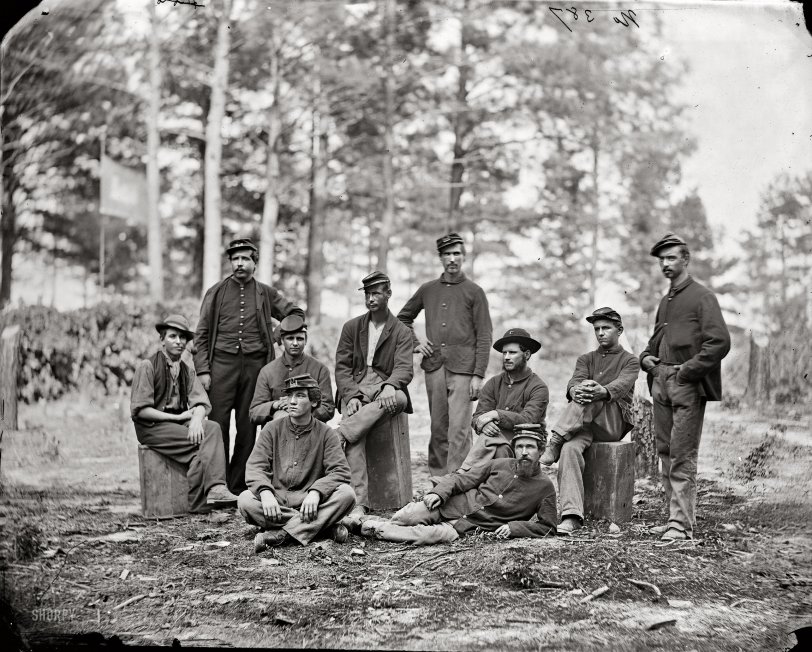


Framed or unframed, desk size to sofa size, printed by us in Arizona and Alabama since 2007. Explore now.
Shorpy is funded by you. Patreon contributors get an ad-free experience.
Learn more.

- Baldwin VO-1000
- Cold
- No expense spared
- Tough Guys
- Lost in Toyland
- And without gloves
- If I were a blindfolded time traveler
- Smoke Consumer Also Cooks
- Oh that stove!
- Possibly still there?
- What?!?
- $100 Reward
- Freeze Frame
- Texas Flyer wanted
- Just a Year Too Soon
- WWII -- Replacing men with women at the railroad crossing.
- Yes, Icing
- You kids drive me nuts!
- NOT An Easy Job
- I wonder
- Just add window boxes
- Icing Platform?
- Indiana Harbor Belt abides
- Freezing haze
- Corrections (for those who care)
- C&NW at Nelson
- Fallen Flags
- A dangerous job made worse
- Water Stop
- Passenger trains have right of way over freights?
Print Emporium
Petersburg: 1864

August 1864. "Petersburg, Virginia. Group of Company D, U.S. Engineer Battalion." Wet-plate glass negative, photographer unknown. View full size.
A Confederate view
One of my ancesters was killed in this battle. He was a private in the South Carolina 1st Batallion sharpshooters and as best as I can tell, they were standing right over the explosion.
Cratering
The Army Engineers had nothing to do with the construction of the great mine at the Battle of the Crater. That was dug by Colonel Henry Pleasants' 48th Pennsylvania Regiment which was drawn from the Pennsylvania coal mining country. Pleasants himself was a mining engineer and he and his men had considerable knowledge of extended tunneling, probably greater knowledge than the army engineers.
Builders not fighters.
Although war anywhere near the front must've been wearying, these men were engineers not warriors. I would imagine thet spent more time surveying and drawing, rather dodging bullets.
Gentlemen's Quarterly
Forgive me, but this grouping of soldiers looks like a picture from a men's clothing catalog rather than of war-weary survivors. They look as if they were modeling, posing with hands on the hips, looking away to the distance, hands on knees, etc. And then there's that ubiquitous fellow in a recumbent pose in the front. There always seems to be one or more of those fellows in photos of this nature.
These could be some of the guys
who tunneled under the Confederate front line and laid the mine whose explosion started the famous Battle of The Crater at Petersburg. They managed to blow up a considerable section of the Confederate line and Union infantry occupied the crater.
If there had been a sucessful exploitation of the gap, Union troops might have broken through to Richmond and possibly ended, if not shortened, the war. Poor planning by the Union High Command and lack of discipline by the troops holding the crater allowed the Confederates to recover, counterattack and re-take control of the gap. Thus, the War slogged on for another year.
























On Shorpy:
Today’s Top 5